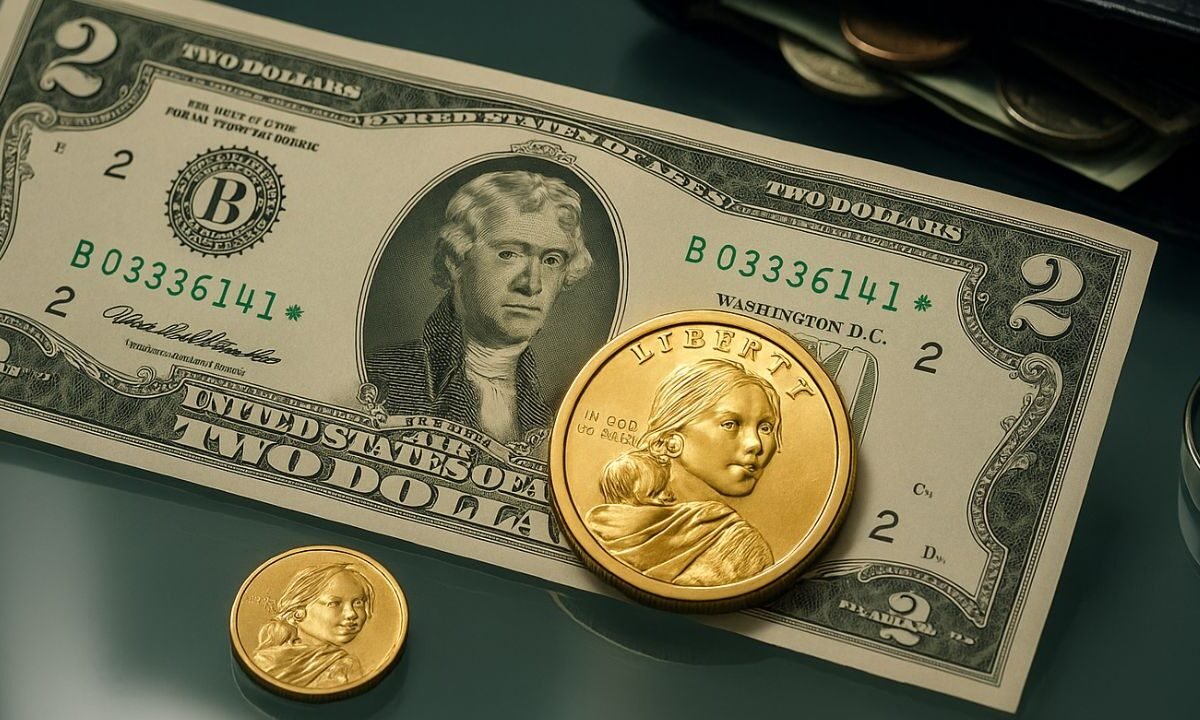Not all money in your wallet is worth its face value. Some notes and coins carry a story, a rarity, and a surprising level of demand among collectors. Two of the most fascinating examples in American currency are the $2 Bill and the Sacagawea Dollar.
Both are often dismissed as oddities—handed out as change at banks, tucked into birthday cards, or kept in drawers as curiosities. Yet, beyond their everyday appearance, certain editions of these pieces have climbed to impressive values in the collector’s market.
For example, a red-seal $2 Bill from the 1920s or a star-note replacement series can sell for hundreds of dollars, far above its face value.
Meanwhile, some versions of the Sacagawea Dollar, such as the famous Cheerios Dollar or the ultra-rare Mule Error, have commanded thousands—even tens of thousands—at auctions. These finds prove that rare currency doesn’t always look rare at first glance.
Collectors are constantly on the lookout for unusual serial numbers, minting mistakes, and older print runs that make these bills and coins unique.
And here’s the best part: you might unknowingly have one tucked away in a wallet, jar, or old envelope at home. Spotting these treasures requires only a bit of knowledge, a sharp eye, and sometimes a magnifying glass.
The History of the $2 Bill
The $2 Bill first appeared in 1862, featuring Alexander Hamilton, later replaced by Thomas Jefferson. Although it remains legal tender, production was limited, leading many to believe it’s rare.
Modern $2 bills are still printed, but older series, especially those with red seals or unique serial numbers, can fetch $500 to $2,000+ depending on condition.
The Story of the Sacagawea Dollar
The Sacagawea Dollar launched in 2000 to replace the unpopular Susan B. Anthony Dollar. It features Sacagawea carrying her infant son.
While many were minted, certain errors, like the 2000-P Cheerios Dollar (distributed in cereal boxes with sharper eagle tail feathers), have sold for over $5,000. Another famous error, the 2000-P Mule Dollar, with a mismatched obverse, has crossed $70,000 at auction.
Value Comparison- $2 Bill vs. Sacagawea Dollar
| Currency | First Issued | Key Rarities/Errors | Potential Value Range | Collectability Level |
|---|---|---|---|---|
| $2 Bill | 1862 | Red seals, star notes, low serials | $500 – $2,000+ | High for older issues |
| Sacagawea Dollar | 2000 | Cheerios Dollar, Mule Error, proofs | $5,000 – $70,000+ | Very high for errors |
Which One Could Be in Your Wallet?
- If you’ve got an older $2 Bill (especially from before 1976 or with red seals), it may be worth far more than face value.
- If you stumble upon a Sacagawea Dollar, check the year and details. Regular versions are worth a dollar, but rare errors like the Cheerios Dollar or Mule Error could be life-changing finds.
- Collectors recommend using a magnifying glass and checking serial numbers, seals, and mint marks before spending or depositing these notes and coins.
Both the $2 Bill and the Sacagawea Dollar hold special places in American currency history. While you might only see face value at first glance, certain series and error prints can be worth hundreds or even thousands of dollars.
Whether tucked in a drawer or handed back as change, these pieces could be hidden treasures waiting to be discovered.
FAQs
Are $2 Bills still in circulation today?
Yes, $2 Bills are still printed, but in smaller quantities, which makes them appear rarer than they are.
What Sacagawea Dollar is the most valuable?
The 2000-P Mule Error Sacagawea Dollar has sold for more than $70,000 at auctions.
Can you spend $2 Bills and Sacagawea Dollars at stores?
Yes, both are legal tender, but collectors strongly suggest checking their rarity before using them.

